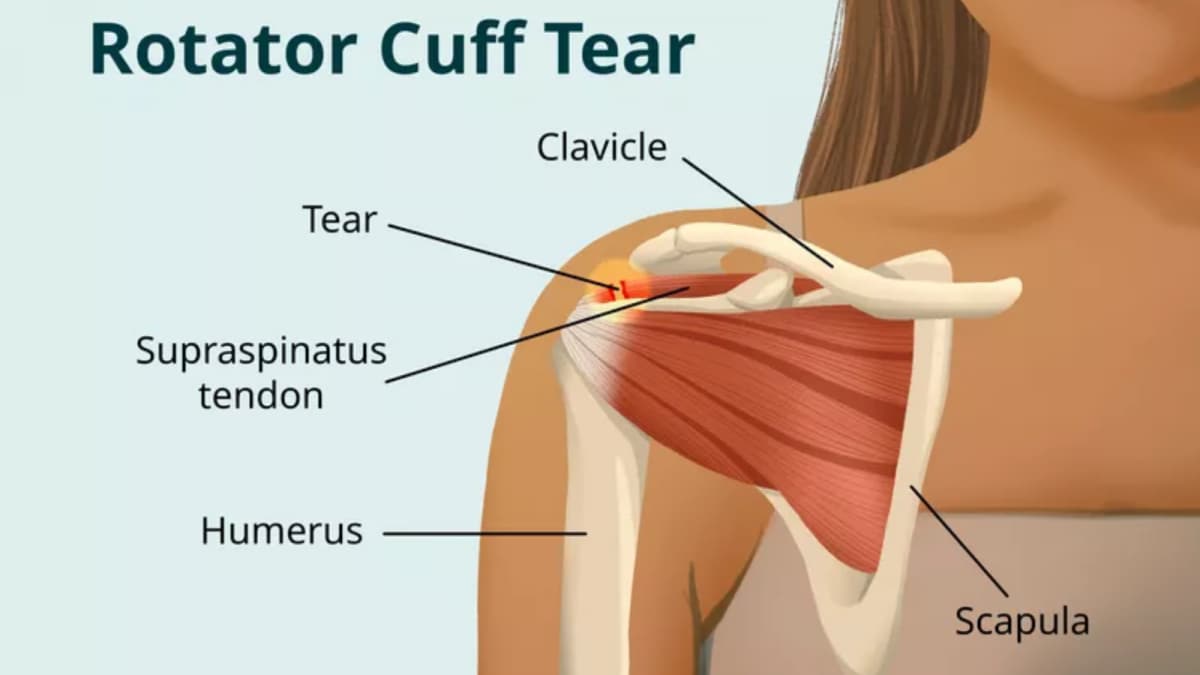Last Updated:
Among athletes and fitness enthusiasts, shoulder pain and stiffness are often early signs of rotator cuff injuries, one of the most common causes of impaired mobility

The rotator cuff, a group of muscles and tendons, helps stabilize the shoulder joint and enables free movement
On National Sports Day, as we celebrate the spirit of athletes and sports, it is equally important to highlight conditions that can limit the ability to stay active. Among athletes and fitness enthusiasts, shoulder pain and stiffness are often early signs of rotator cuff injuries, one of the most common causes of impaired mobility. The rotator cuff, a group of muscles and tendons, helps stabilize the shoulder joint and enables free movement. Damage here can affect not only sports performance but also daily activities. Dr. Gaurav Gupta, Consultant Orthopaedics, Fortis Hospital, Kolkata shares all you need to know:
Causes of Rotator Cuff Injuries in Athletes
• Overhead Sports: Repetitive overhead movements in tennis, swimming, volleyball, or cricket can strain and tear the tendons.
• High-Impact Trauma: Falls, tackles, or collisions in contact sports may lead to acute tears.
• Overtraining & Poor Technique: Intense training without adequate rest or improper form during workouts increases the risk of shoulder injuries.
Early Symptoms of Rotator Cuff Damage
• Persistent Pain and Weakness: Pain during throwing, lifting, or weight training is an early warning sign. Weakness often follows, reducing power and endurance.
• Stiffness and Reduced Mobility: Difficulty rotating the shoulder or raising the arm overhead limits performance in sports like swimming, tennis, cricket, or basketball.
• Disturbed Sleep: Athletes often report shoulder discomfort at night, especially when lying on the affected side, which hinders recovery.
Types of Rotator Cuff Tears
• Partial Tear: Tendon damage without full detachment, often seen in early-stage sports injuries
• Complete Tear: Full separation of the tendon from the bone, resulting in significant weakness and reduced performance
• Massive Tear: Multiple tendons involved, severely restricting shoulder function if not treated promptly.
Treating the tear
• Non-invasive treatment: Physical therapy, medication, R.I.C.E therapy (Rest, Ice, Compression and Elevation), lifestyle changes such as certain exercises may be recommended as a first step to provide pain relief, reduce swelling and restore shoulder movement.
• Arthroscopic surgery: If non-surgical treatment does not bring relief, a minimally invasive surgical procedure could be suggested. During an arthroscopic shoulder surgery, the joint is accessed through 2-3 small incisions to insert a tiny camera and specialized surgical instruments to repair or treat the tear using either titanium or bioabsorbable anchors. The camera allows surgeon to see your joint and injury in real-time on a video monitor. This technique supports faster recovery and less pain due to its minimally invasive nature.
Post-surgery recovery regime includes immobilizing the joint with an arm sling for a few weeks, based on your condition, to aid healing followed by physiotherapy to help regain full range of motion.

Swati Chaturvedi, a seasoned media and journalism aficionado with over 10 years of expertise, is not just a storyteller; she’s a weaver of wit and wisdom in the digital landscape. As a key figure in News18 Engl…Read More
Swati Chaturvedi, a seasoned media and journalism aficionado with over 10 years of expertise, is not just a storyteller; she’s a weaver of wit and wisdom in the digital landscape. As a key figure in News18 Engl… Read More







